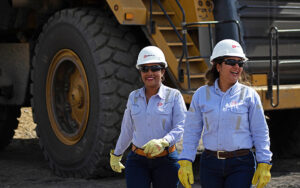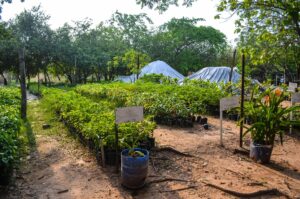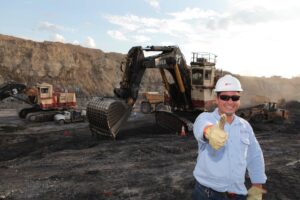Air quality
Air quality in any open pit mining operation is one of the biggest environmental challenges. At Drummond, we understand this as a challenge that requires permanent evolution and, therefore, we have implemented different strategies to prevent, control and mitigate the emission of particulate matter, as well as to maintain air quality at levels that protect the health of our neighboring communities. We are also attentive to measurement and monitoring, which shed light on the effectiveness of the measures and the possibility of improvement.
How do we do it?
To prevent the generation of particulate matter in mining operations, we have implemented the most efficient controls proven worldwide for each of the processes that can generate emissions, including spraying with water cannons and foggers for loading material (being the pioneers in the implementation of these controls in Colombia) and constant wetting of the roads with tankers of up to 22,000 gallons (through a monthly irrigation plan that ensures optimum efficiency in the roads with the highest traffic). Translated with www.DeepL.com/Translator (free version)
 To carry out these activities, we have the largest fleet of tankers for road irrigation per production unit in the country, 30 in total; we apply special products on the roads -especially in dry seasons- that minimize dust emissions from traffic, reducing water use. In addition, we perform the humidification and compaction of the coal loaded in the train cars, to reduce and avoid emissions during loading and transportation to the port.
To carry out these activities, we have the largest fleet of tankers for road irrigation per production unit in the country, 30 in total; we apply special products on the roads -especially in dry seasons- that minimize dust emissions from traffic, reducing water use. In addition, we perform the humidification and compaction of the coal loaded in the train cars, to reduce and avoid emissions during loading and transportation to the port.
How do we measure it?
 To measure and evaluate the efficiency of these measures, we have internal monitoring networks for operational control, which immediately alert the operation when it is necessary to activate special emission control protocols. In addition, we have an external monitoring network composed of six air monitoring stations located in neighboring towns, in order to know in a timely manner the behavior of particulate matter concentrations in the population centers.
To measure and evaluate the efficiency of these measures, we have internal monitoring networks for operational control, which immediately alert the operation when it is necessary to activate special emission control protocols. In addition, we have an external monitoring network composed of six air monitoring stations located in neighboring towns, in order to know in a timely manner the behavior of particulate matter concentrations in the population centers.
At the port, water is applied at the coal transfer and handling points that have the greatest potential for particulate matter emissions. The entire belt system is covered, leaving only the necessary space for inspection and maintenance.
As a complement to the air quality management measures, Drummond develops annual particulate matter dispersion models to understand the current contributions of this material and forecast future conditions that may require the application of specific and additional measures to control emissions, as well as to design irrigation plans.




